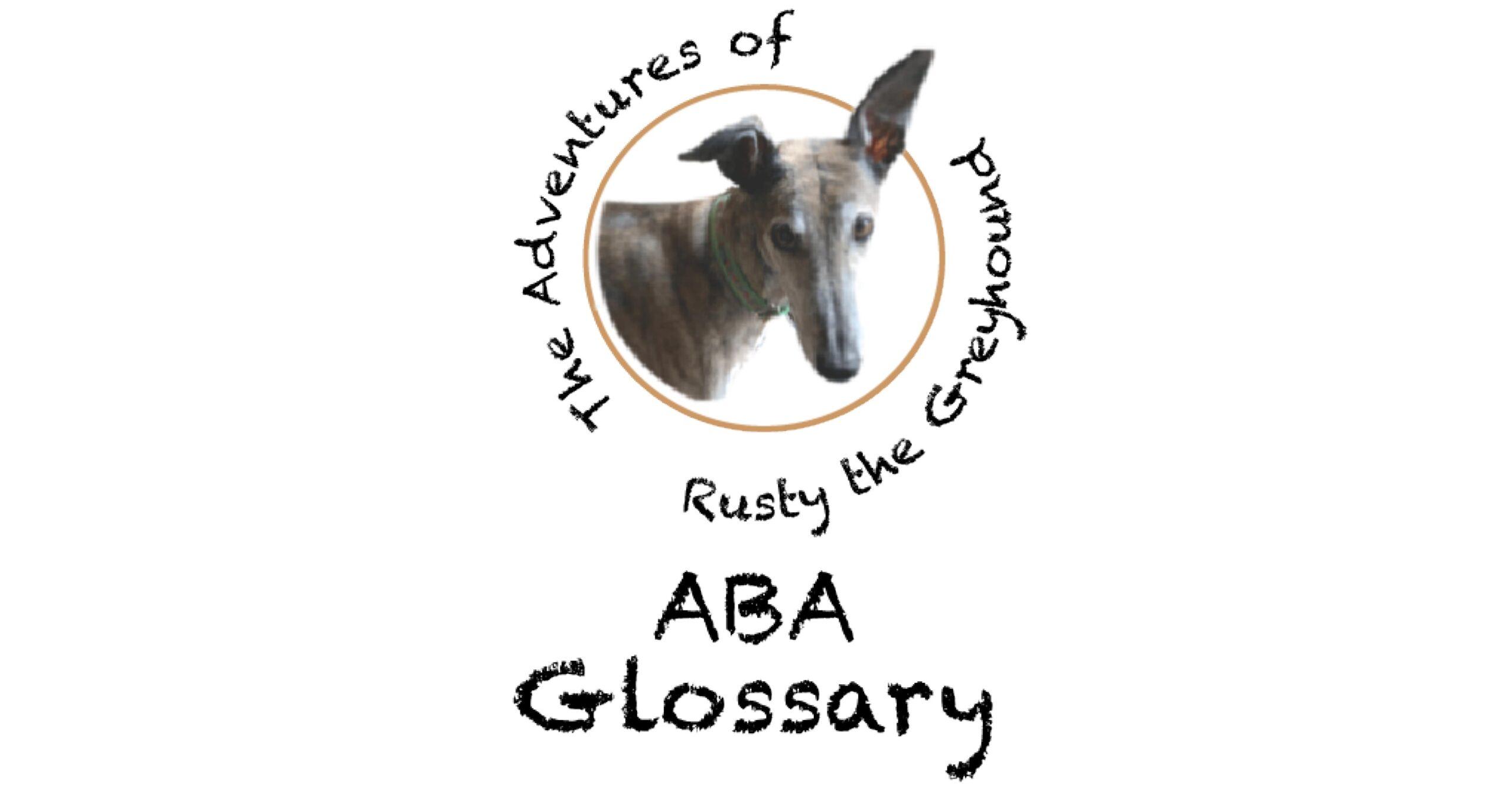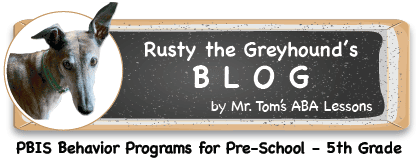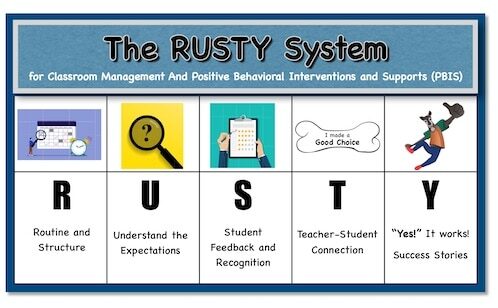
ABA language can be very confusing for non-behavior specialists. I’ve tried to make the ABA Glossary For Non- BCBA’s language understandable for the rest of the world. I also divided the terms into four categories. All Definitions with a * are from ABACources.com
Speech I Teaching I Data I Reinforcers
Speech
| Term | Definition | Example |
|---|---|---|
| Echoic | * A verbal behavior where one speaker repeats the word of another speaker | * RBT: “Music” Learner: “Music.” |
| Expressive Communication | * Verbal behavior used to communicate with others. The learner answers another speaker’s question. | * RBT: “How old are you?” Learner: “I am 5 years old” |
| Receptive Communication | When the listener responds to what someone asked them | * Learner gives the toy when asked for the toy |
| Mand | *A verbal behavior where an individual makes a request | Learner: “I want Legos” |
| Picture Exchange Communication System (PECS) | * A communication tool that uses pictures and other symbols to communicate requests or needs | The BCBA created a PECS board that contains the learner’s preferred items. The learner now points to the ‘book’ icon to ask for a book |
| Scripting | * Vocal repetition of the same word, phrase, or sound | * The learner repeats a line heard from a favorite video |
Teaching
| Teaching | Definition | Example |
|---|---|---|
| Target Behavior | * The behavior that has been selected for change | Using words in place of hitting friends |
| Behavior Intervention Plan (BIP) | * A treatment plan designed to change or modify a target behavior. | * The learner’s BIP establishes the antecedent and consequence strategies that will be utilized to address the target behavior. |
| Chaining | * A teaching method to learn multiple steps of a skill | * The RBT uses Backward Chaining to teach a learner handwashing. This means that the first step the RBT teaches the learner is the last step of the chain: dry hands. |
| Errorless Learning | * A teaching strategy that guarantees that the learner will respond correctly | * RBT: “What is this? Tree.” Learner: “Tree.” |
| Evidence Based Practice (EBP) | Using peer-reviewed proven strategies to help reduce or increase a behavior | Modeling and prompting a student what to say when they need something |
| Extinction | When the behavior no longer receives attention, it is ignored. | When Joe makes an inappropriate comment, it is ignored, and he is redirected back to his work. |
| Extinction Burst | When a behavior is ignored, that behavior sometimes happens more often or at a higher intensity for a short period of time. | Joe’s inappropriate comments are ignored, so he says more and makes them more personal. Once that doesn’t get him the attention, he stops saying those things. |
| Generalization | * The ability of a learner to perform a skill under different conditions across settings, people, and materials | * The learner demonstrates the same skill with the RBT at the dining table as with the mother in the backyard. |
| Model | When you show the student how to do something they did not know how to do. This could be what words to use, or a physical task. | The teacher modeled for Joe how to sit chris-cross, look at the teacher, have a quiet mouth, and body. |
| Video Model | When you show a short video of a student doing the task or using the words that you want the student to use. | The teacher out on a Sesame Street video of Cookie Monster learning how to listen and focus on what the teacher is saying to get his cookies. |
| Natural Environment Training (NET) | * Utilizing the learner’s natural environment for teaching opportunities | Playing I spy while going on a walk. Counting the number of red cars you see. |
| Pairing | * A technique where a person will associate themselves with all of the learner’s favorite items and activities | The learner sees the RBT and asks the RBT, “Let’s do a dance party!” The RBT does the dance party with the learner. The learner associates the RBT as the person who will provide a fun activity |
| Prompt | * A level of assistance that is meant to encourage a learner to perform a desired behavior. Examples of prompts can be full physical prompt (FP), partial physical prompt (PP), verbal prompt (VP), model prompt (MP), visual prompt (VP), gesture prompt(GP) and a written prompt (WP) | FP: Hold the learner’s hand to help them complete the demand PP: Tap the learner’s hand to remind them what to do. VP: You tell the learner what to do MP: You show the learner what to do VP: You show the learner a card of what to do. GP: you point to your hands to show the learner what to do WP: You write down what the learner should do. |
| Prompt Dependent | * When a learner continues to need a prompt in order to initiate a skill that was previously mastered | * RBT: Presents a picture and asks the learner, “What is this?” Learner: Looks at the picture and then looks at the RBT (to receive a prompt) |
| Prompt Fade | * Decreasing the amount and level of prompts over time to promote a learner’s independent response | * The RBT goes from using a full physical prompt to a gesture prompt when teaching handwashing |
| Scripting | * Vocal repetition of the same word, phrase, or sound | * The learner repeats a line heard from a favorite video |
| Shaping | * A teaching process where the approximations of a desired behavior is reinforced and when a new approximation occurs the previous approximation is no longer reinforced | While teaching Joe to ask friends to play, Mr. Tom Prompted “play.” Then Mr. Tom prompted, “Play with me?” Then Mr. Tom prompted, “Play trains with me?” |
| Socially significant behaviors | * Important for the individual and the society around them, for example: social skills, communication, and adaptive skills. | * When selecting behaviors to target for increase (skill acquisition) or decrease (challenging behavior), those skills should be socially significant, meaning that they are important for the day-to-day life experience of the learner and/or affect their significant others in such ways that create positivity for them and the learner |
| Target Behavior | * The behavior that has been selected for change | Using words in place of hitting friends |
| Task Analysis | * Breaking down a skill into multiple simple steps | * A step-by-step list on how to put on a shirt. For example: pick up shirt with both hands, lift up, etc. |
| Task Reduction | * Decreasing the demands placed on a learner to decrease the likelihood of a problem behavior occurring | Give the student a small area to clean up while helping the student clean up other areas |
| Visual Schedules | * A tool that can help individuals to follow a routine and assist with transitions between activities | This would be hung on the wall so that the students can see what will happen after that activity ends |
Reinforcers
| Reinforcers | Definition | Example |
|---|---|---|
| Preference | * An item or activity the individual is interested in | Parents reported that the learner loves to play with puzzles and blocks. The RBT will use the puzzles and blocks in the session and alternates with less preferred activities |
| Preference Assessments | * Methods or procedures to identify a client’s potential reinforcers or rewards. | There are different ways to find out what the student likes. Ask the teacher/parents or let the child pick from different toys they play with. |
| Fixed Interval (FI) | Rewards are given at the end of a set amount of time. | * Access to stickers is provided every 5 minutes when the learner is sitting down in class (FI5) |
| Fixed Ratio (FR) | Rewards are given after a set amount of correct responses, answers, or tries. | A sticker is provided after 5 activities are completed. |
| Continuous Schedule of Reinforcement (CRF) | * During CRF, reinforcement is provided every time a behavior is emitted. | * Every time your phone rings, you pick up. |
| Variable Ratio (VR) | * Schedule of reinforcement where a response is reinforced after an unpredictable number of responses. Characteristics: creates a steady, high rate of responding The learner doesn’t know when the reward will come | * Access to bubbles is delivered after 4 correct responses and again after 6 correct responses (VR5). Another example can be gambling and lottery games |
| Variable Interval (VI) | TIme based rewards. *Characteristics of the Variable Interval schedule are resistant to Extinction, rate of response is moderate but steady, very minimal pause after reinforcement is given The learner doesn’t know when the reward will come | * Access to stickers is delivered after 3 minutes of sitting and again after 5 minutes of sitting. This is on average 4 minutes (VI4). Other examples can be your employer checking your work, checking your email |
| Intermittent Schedules of Reinforcement (INT) | *INT is when some, but not all, instances of a behavior are reinforced. Example schedules can be a ratio or interval schedule | * A gambling machine |
| Satiation | * The reinforcer is no longer effective due to being overused | * During the ABA session, the learner is no longer interested in playing with trains due to playing with the train set for a while before the session took place |
| Reinforcement | * Introducing or removing a stimulus (an object) after the target behavior occurs that will increase the likelihood that the behavior will occur in the future | * The RBT gives the learner a car after the learner requests the car correctly |
| Behavior Contracts | * A written agreement that is used to establish the expected behaviors or tasks to be completed and the reward the client earns upon the completion of the agreement | * The RBT and the learner fill out a behavior contract to outline the goals the learner should accomplish. |
Data
| Data | Definition | Example |
|---|---|---|
| ABC Data | Data is collected for what happened Before (Antecedent) the behavior, what the behavior was, and the consequence of the behavior. | A: Joe was not Getting Attention from his teacher B: Joe hit a peer C: Joe’s teacher talked to Joe, giving him attention |
| Antecedent | What happened BEFORE the behavior. | Joe’s peer took a toy Joe was playing with. |
| Behavior | What the person does to get a response. | Joe hit his peer. |
| Consequence | * Occurs immediately after the behavior and affects future behaviors | * Mother holds the iPad and tells Isa, “iPad time is all done.” |
| Baseline Data | *A measurement of an individual’s behavior or skill before intervention. | Joe fell asleep between 9 and 10:45 in the sleep studies baseline data. |
| Data | The information that is collected about how often or how long the behavior happens | In a 1 hour session, Joe hit his peers three times |
| Data Collection | * A method of gathering information | * The RBT writes down on a data collection sheet how many times Hiroko shared a toy during 15 minutes of playtime |
| Goal | This is how you want the behavior to look after treatment is completed. | xxxx will independently follow novel (non-routine) instructions (such as tabletop tasks, completing art projects, and nonroutine transitions) throughout the session with 1 or less prompt across three consecutive sessions. |



